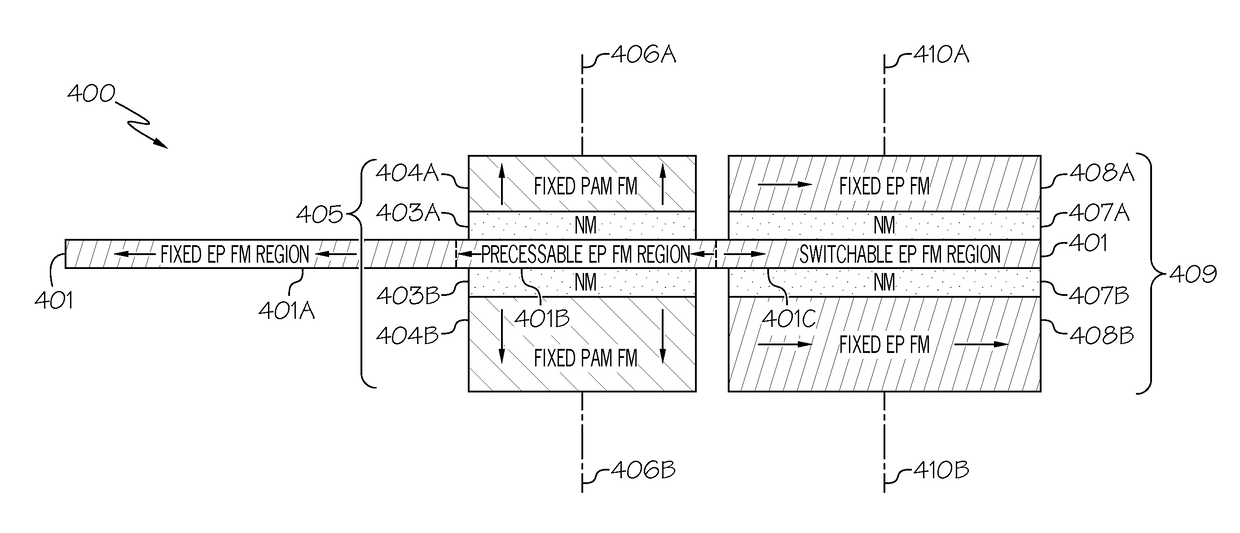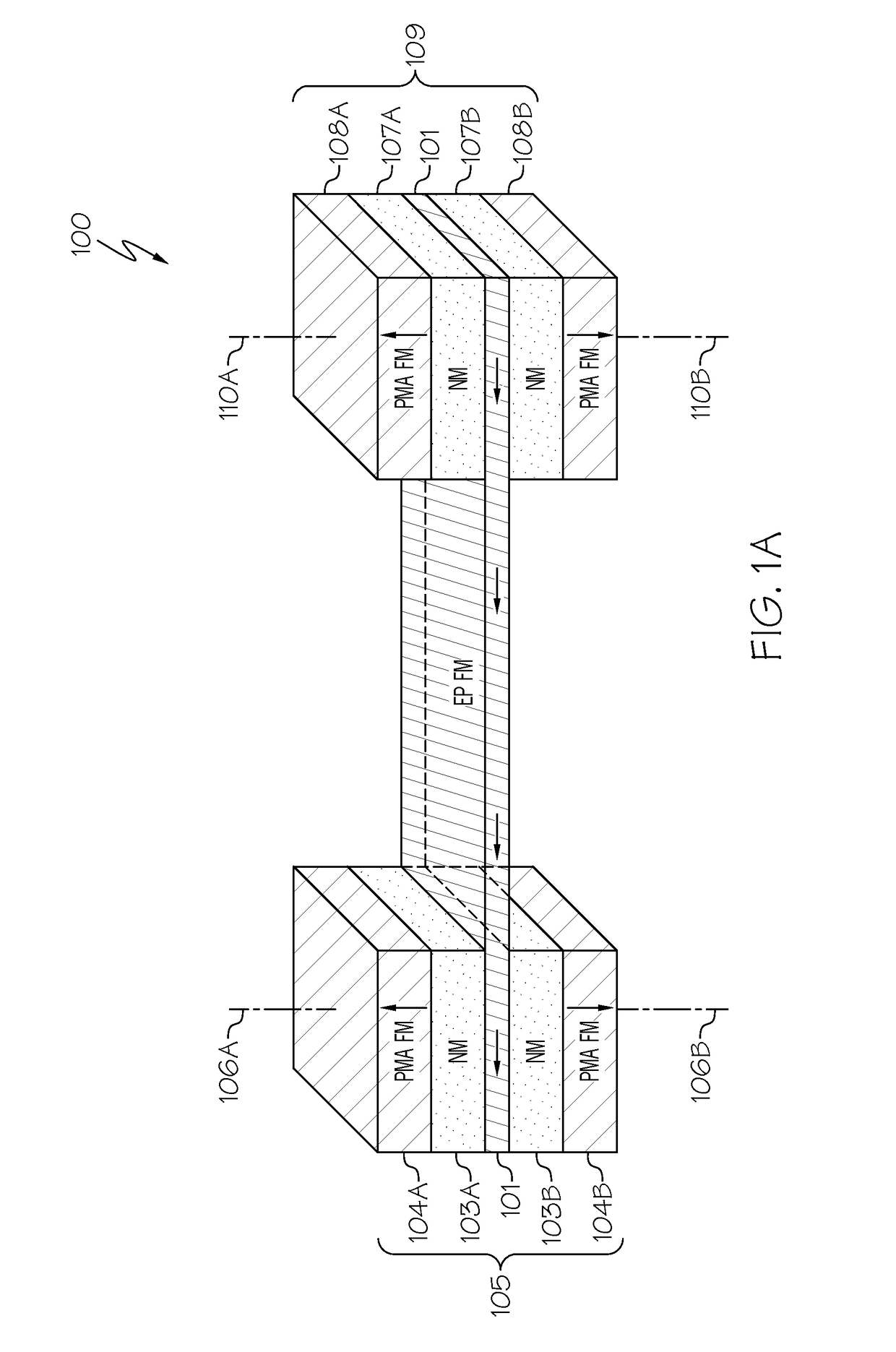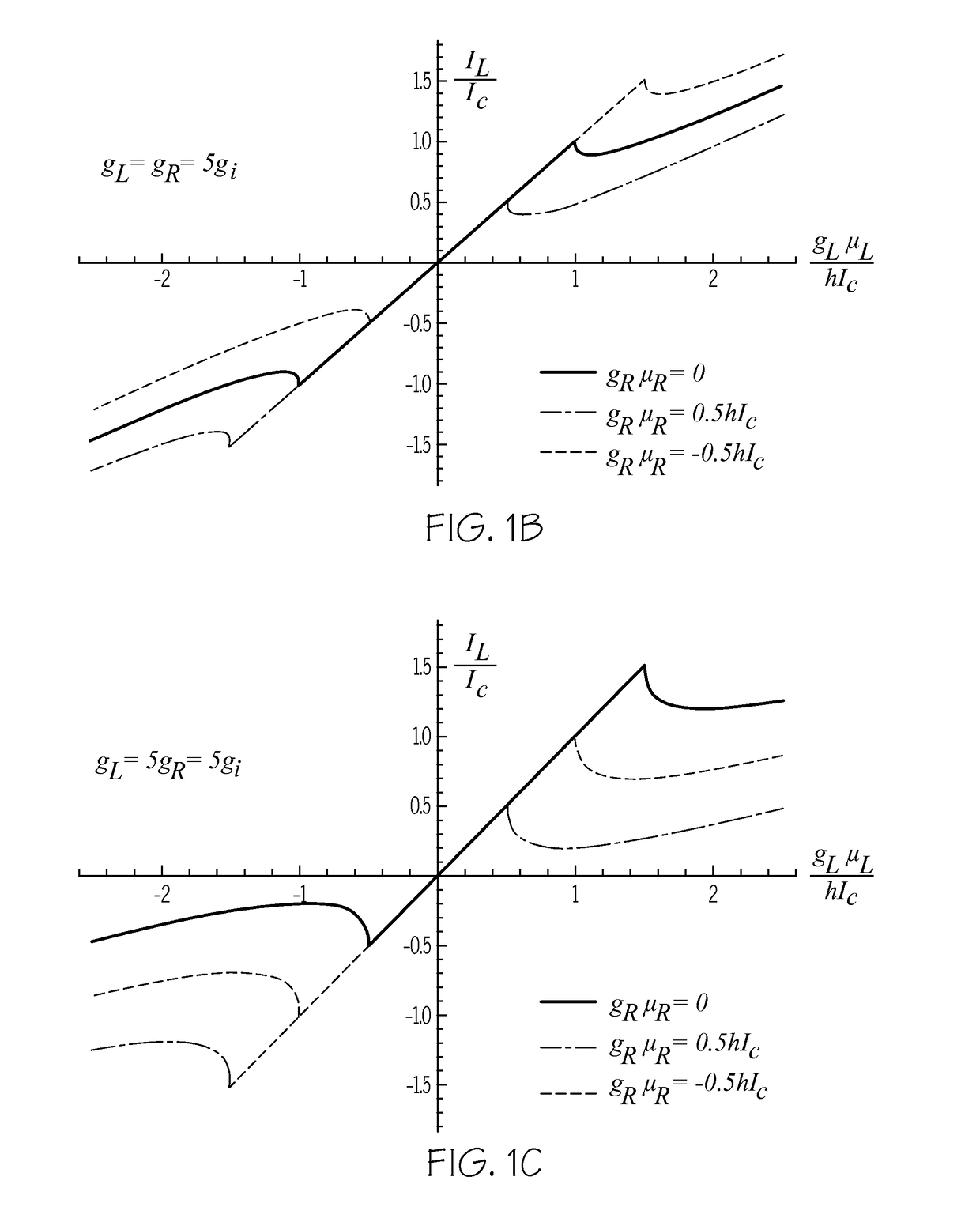Transistor that employs collective magnetic effects thereby providing improved energy efficiency
a technology of collective magnetic effects and transistors, applied in the field of transistors, can solve the problems of large power consumption and loss of logic state, and achieve the effects of increasing increasing the critical current, and decreasing the strength of the magnetic orientation
- Summary
- Abstract
- Description
- Claims
- Application Information
AI Technical Summary
Benefits of technology
Problems solved by technology
Method used
Image
Examples
Embodiment Construction
[0022]The principles of the present invention include two embodiments of a common transistor theme, referred to herein as the “Bi-Stack Magnetic Transistor” (BiSMaT). Both embodiments of the BiSMaT are intended to allow lower voltage, lower power memory and logic operation than possible with currently used complementary metal oxide semiconductor (CMOS) field-effect transistor (FET) based logic. Increased energy efficiency is not only important for its own sake, but also is necessary in logic circuits to enable increased device packing density and the resulting increase in computational power. Recent progress in the growth of magnetic thin films has made it possible to construct circuits in which materials with perpendicular and in-plane magnetic anisotropy are flexibly combined. This progress has improved prospects for the experimental realization of a new class of effects in spintronics in which collective magnetic degrees of freedom play a more active role than they do in memory d...
PUM
 Login to View More
Login to View More Abstract
Description
Claims
Application Information
 Login to View More
Login to View More - R&D
- Intellectual Property
- Life Sciences
- Materials
- Tech Scout
- Unparalleled Data Quality
- Higher Quality Content
- 60% Fewer Hallucinations
Browse by: Latest US Patents, China's latest patents, Technical Efficacy Thesaurus, Application Domain, Technology Topic, Popular Technical Reports.
© 2025 PatSnap. All rights reserved.Legal|Privacy policy|Modern Slavery Act Transparency Statement|Sitemap|About US| Contact US: help@patsnap.com



